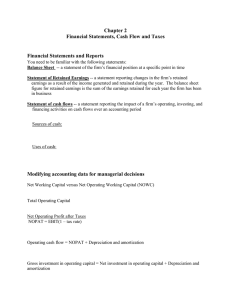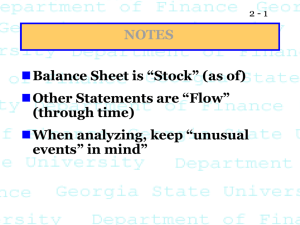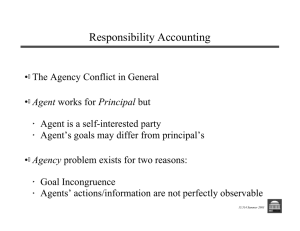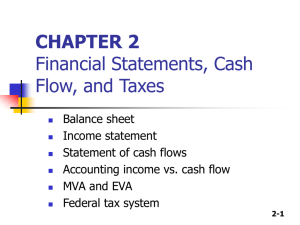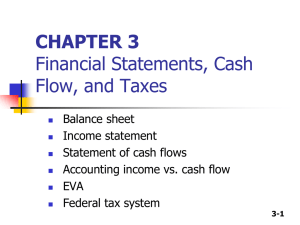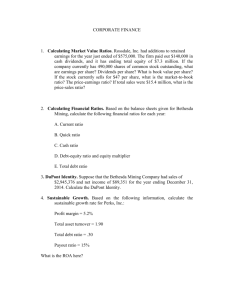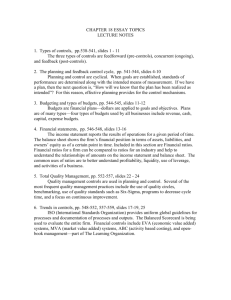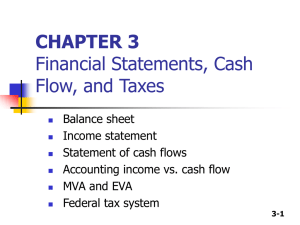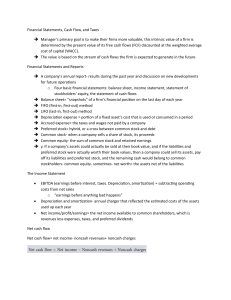Chapter 13
advertisement
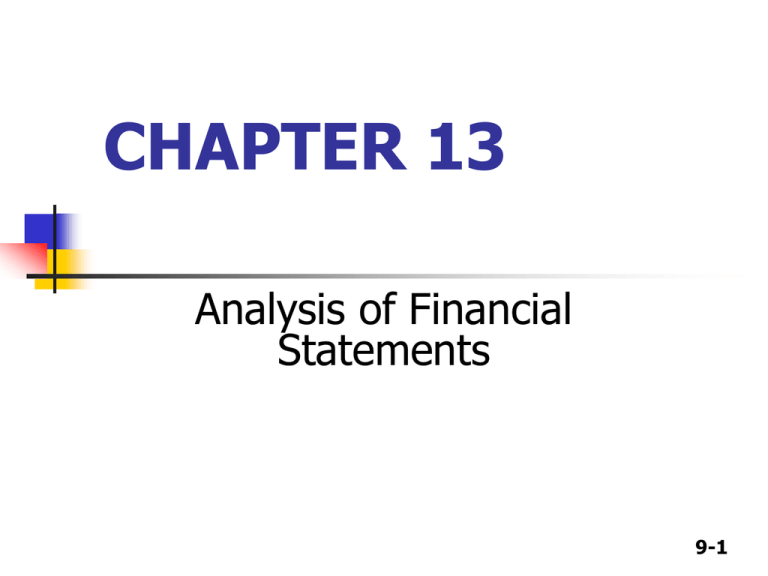
CHAPTER 13 Analysis of Financial Statements 9-1 Analysis of Financial Statements Ratio analysis Trend Analysis DuPont Analysis Competitive Comparisons & “Benchmarking” Limitations of ratio analysis 9-2 Objectives of Ratio Analysis Standardize numbers Compare Performance Trends Competition Identify Strengths & Weaknesses Make Management Decisions to improve Future Performance 9-3 5 Basic Categories of Ratio Analysis Liquidity Asset Management Debt Management Profitability Market Value Understand Table 13-2 9-4 3 Basic Performance Comparisons Trends (Change over time) Common Size % Change 9-5 DuPont Analysis Ties the Ratios Together Profitability Asset Management Debt Management ROEcom = NIcomm/CommEquity = PM X TAT X EqMultiplier 9-6 Other Important Performance Measures Free Cash Flows (FCF) Market Value Added (MVA) FCF = NOPAT – Net Capital Investment NOPAT = EBIT X (1 – Tax Rate) MVA = CommEquity MV – CommEquity BV Economic Value Added (EVA) EVA = NOPAT – Cost of Capital 9-7 Competitive Comparisons & “Benchmarking” Fundamental Analysis compares firm with Industry Averages Question?? “Do you want to be Average??” “Benchmarking” compares firm with Selected or Best Performing Competitors 9-8 3 Main Users of Ratio Analysis Within Firm Managers Credit Analysts (Suppliers, Banks, & Bonds) Stock Analysts 9-9 Major Limitations of Ratio Analysis Multi Division Firms Seasonal Factors “Window Dressing” by Management Different Accounting Practices Some Ratios difficult to assess (i.e. Liquidity) Balance among “good” and “bad” ratios Accuracy of data 9-10 Problems with ROE Does not consider Risk Does not consider size of Invested Capital Does not consider Market Value of Stock 9-11 Looking Beyond the Numbers Dependency on one/few Customers Products Suppliers Countries (% Foreign Business) Competition Future Prospects Legal & Regulatory Environment 9-12
